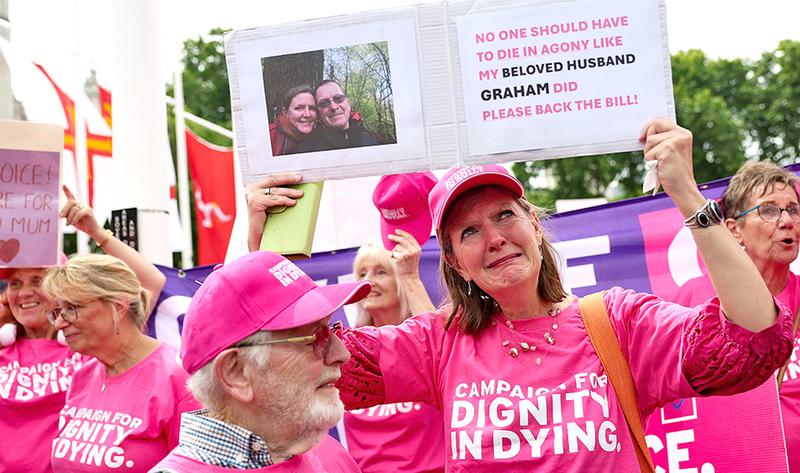UK’s Terminally Ill Adults (End of Life) Bill

- 26 Jun 2025
In News:
In a landmark decision, the UK House of Commons has passed the Terminally Ill Adults (End of Life) Bill, which seeks to legaliseassisted dying for terminally ill individuals in England and Wales. The Bill passed with a narrow margin of 314 to 291 votes, and will now proceed to the House of Lords for further deliberation.
Key Provisions of the Bill:
- Applicability: England and Wales.
- Eligibility: Only for patients diagnosed with less than six months to live.
- Safeguards:
- The patient must be mentally competent.
- Approval is required from two doctors, a psychiatrist, a senior lawyer, and a social worker.
- The process ensures the patient’s choice is informed and voluntary.
Understanding Euthanasia:
- Etymology: From Greek “eu” (good) + “thanatos” (death) = “good death”.
- Definition: Intentional act of ending a person’s life to relieve suffering from terminal illness or unbearable pain.
Types of Euthanasia:
Type Description Example
Active Deliberate action to end life Lethal injection
Passive Withdrawal of treatment Removing life support
Voluntary With patient’s consent Terminally ill requesting euthanasia
Involuntary Without consent Considered illegal
Ethical Dimensions:
Arguments in favour
- Right to Autonomy: Upholds personal freedom in deciding life and death.
- Compassionate Exit: Eases intractable suffering.
- Dignity in Death: Ensures control over one’s final moments.
- Relief for Families: Reduces emotional and financial strain.
- Medical Resource Optimization: Redirects care to patients with curable conditions.
Arguments Against
- Sanctity of Life: Human life is sacred and must not be intentionally ended.
- Risk of Coercion: Vulnerable groups may be pressured into opting for death.
- Existence of Palliative Alternatives: Modern hospice care offers non-lethal relief.
- Slippery Slope: May lead to misuse or extension to non-terminal cases.
- Erosion of Medical Ethics: Challenges the healer role of doctors.
Indian Legal Perspective:
India has grappled with the euthanasia debate in various judicial pronouncements:
- Gian Kaur v. State of Punjab (1996): Right to die not included under Article 21.
- Aruna Shanbaug Case (2011): Allowed passive euthanasia under strict conditions.
- Common Cause v. Union of India (2018):Recognised the right to die with dignity and permitted Advance Medical Directives.
